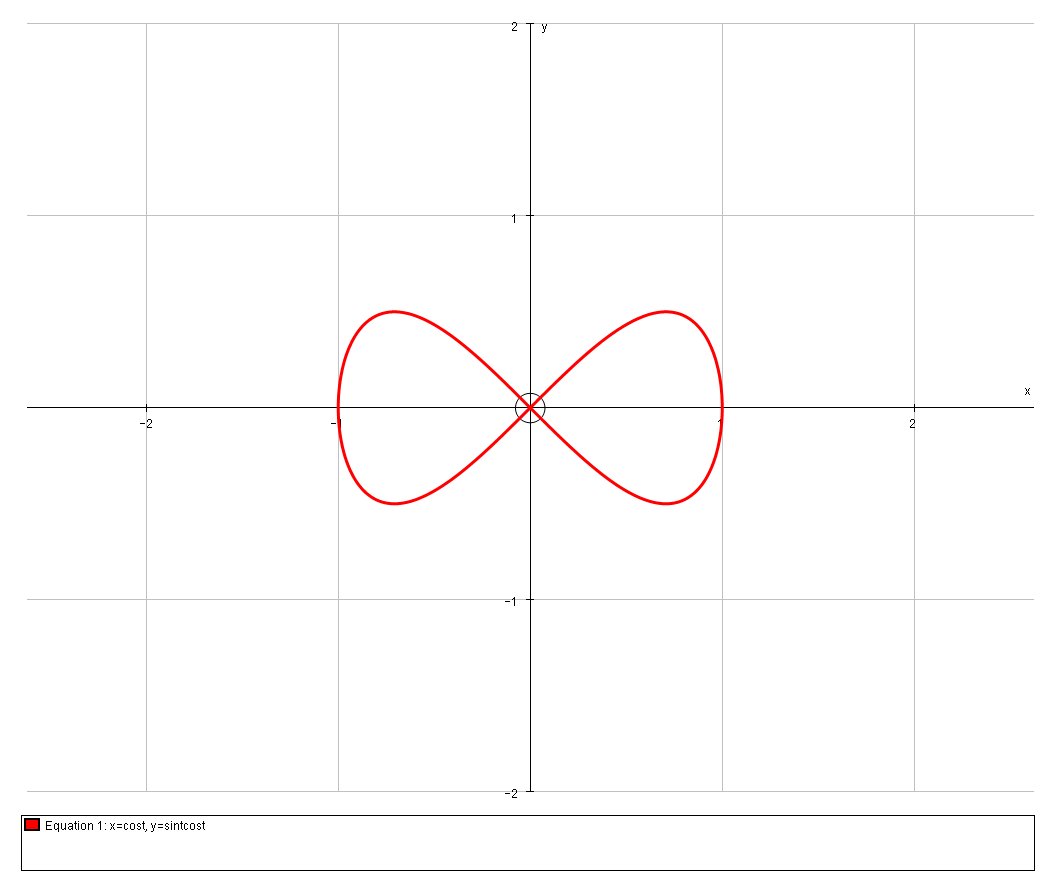How do you show that the curve x=cos t , y= sin t cos t has two tangents at (0,0) and find their equations?
2 Answers
The equations are the two tangents are:
# y = +- x #
Explanation:
We have parametric equations:
# x = cost #
# y = sintcost \ \ \ # where# t in [0,2pi]#
Firstly, as most modern calculators have (and examinations allow) graphing capabilities, let us look at the graph of the curve.

So certainly it appears that at the origin there would be two tangents, so now let us prove this:
The gradient of the tangent to a curve at any particular point is given by the derivative of the curve at that point. (If needed, then the normal is perpendicular to the tangent so the product of their gradients is
Differentiating the equations wrt
# dx/dt = -sint #
# dy/dt = sint(-sint)+(cost)(cost) = cos^2t-sin^2t#
And so the curves derivative is given by:
# dy/dx = (dy/dt)/(dx/dt) = -(cos^2t-sin^2t)/sint #
At the origin we clearly have simultaneously:
# x = y = 0 #
# :. cost = 0 => t = pi/2, (3pi)/2 #
And with these values of
# [ dy/dx ]_(t=pi/2) = (0-1)/1 = 1 #
# [ dy/dx ]_(t=(3pi)/2) = (0-(-1))/(-1) = -1 #
And there are no other values of
So the tangents pass through
When
# y - 0 = (1)(x-0 ) #
# y=x #
When
# y - 0 = (-1)(x-0 ) #
# y=-x #
I like Steve's solution better than mine. But, for what it's worth, here's my solution.
Explanation:
With
So
And
At
The equation s of the lines are
Although not needed, here are the graphs of the two branches.
graph{xsqrt(1-x^2) [-3.08, 3.08, -1.538, 1.54]}
graph{-xsqrt(1-x^2) [-3.08, 3.08, -1.538, 1.54]}


